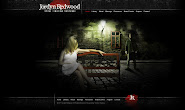Jean asks:
I have a question related to cerebral hypoxia as a
complication of old-style electro-convulsive therapy.
I'm plotting out a story that takes place in a
psychiatric hospital. My protagonist is a patient at the hospital who was sane
and healthy when he was forcibly admitted. He was formerly a thief, and escaped
prison by being diagnosed with kleptomania, as a form of monomania. During the
year he is incarcerated at the asylum and as a result of the treatments he
undergoes, he gradually loses his sanity and his memory.
One of the anachronisms I have in the setting is the
existence of electroconvulsive therapy, or ECT, which will be done using the
early, more damaging methods. As such there will be no anesthetic, muscle
relaxants, bilateral electrode placement or oxygen administered during the
procedure. Other than the existence of ECT, the medical knowledge of the
doctors at the hospital largely reflects the state of medical knowledge from
about 1850 or thereabouts.
I've learned that one of the complications of ECT is the possibility of triggering a prolonged seizure or series of seizures that can last for many minutes during which the patient might be unable to breathe. Currently, doctors can prevent this by administering oxygen and using anticonvulsants to arrest a seizure that continues for too long. Neither of these options is available in a Victorian-based setting in which there were no effective treatments for seizures or coma.
I've learned that one of the complications of ECT is the possibility of triggering a prolonged seizure or series of seizures that can last for many minutes during which the patient might be unable to breathe. Currently, doctors can prevent this by administering oxygen and using anticonvulsants to arrest a seizure that continues for too long. Neither of these options is available in a Victorian-based setting in which there were no effective treatments for seizures or coma.
In the plot, the ECT triggers a prolonged seizure and
the protagonist is unable to breathe for several minutes. The resulting hypoxia
puts him into a shallow coma for a short period of time. After he wakes again,
the complications from the hypoxia produce symptoms in him that mimic the
psychiatric symptoms that the doctors were expecting to see as a result of his
"insanity", such as memory loss, confusion, hallucinations, etc.
The research I've been able to do suggests to me
that this is a plausible scenario, but I have no medical training and would
greatly appreciate a more experienced opinion. Can hypoxia from a prolonged
seizure triggered by old-style ECT send a patient into a coma if given no
treatment? How long might be a realistic length of time for the coma to last?
How severe could the resulting symptoms be?
Jordyn Says:
Thanks so much for sending me this question Jean and
it is an interesting question!
I ran this by a physician friend of mine (thanks
Liz!) and here are her thoughts and then I’ll add some of mine.
Liz Says:
Liz Says:
I am sure with ECT "anything could be
possible" but nowadays it is total disinhibition. These patients
become very "frontal"—driven by the frontal lobe and lose their
filter, become hypersexual, will say and do anything.
Some can become psychotic which can be accompanied by hallucinations. I don't know if they could have hallucinations WITHOUT psychosis. But I don't think anyone would argue the point since strange things happen in the brain with electricity especially in the setting as the early years of ECT. I’m sure hallucinations could also happen after the hypoxia and coma.
Some can become psychotic which can be accompanied by hallucinations. I don't know if they could have hallucinations WITHOUT psychosis. But I don't think anyone would argue the point since strange things happen in the brain with electricity especially in the setting as the early years of ECT. I’m sure hallucinations could also happen after the hypoxia and coma.
Jordyn Says:
The brain is one organ that we still know very
little about. In the presence of hypoxia (or lack of oxygen) the length of coma
and the severity of symptoms is largely up to the writer. There is a lot of
leeway here. I’ve seen patients wake up from a coma that I would never thought
should have survived and I’ve seen patients with more what seemed to be
treatable head injuries progress to death.
Hope this helps and best of luck with your book!


















No comments:
Post a Comment